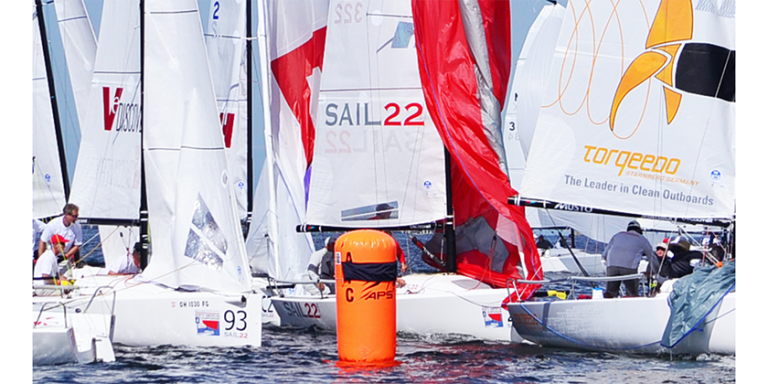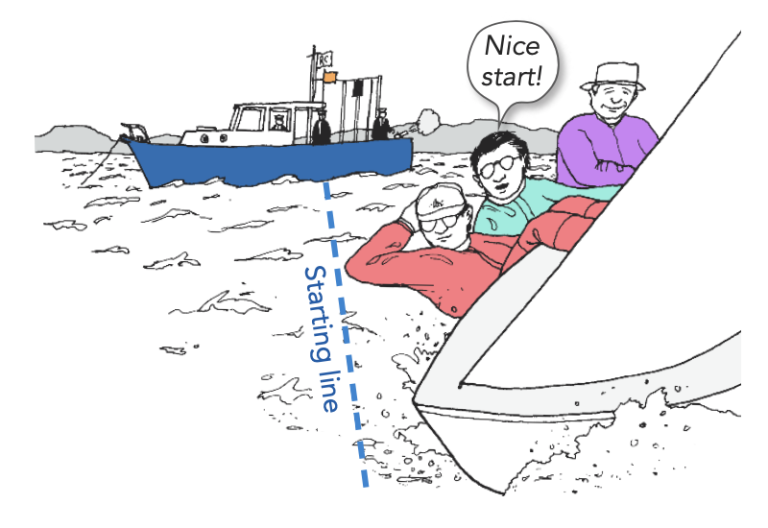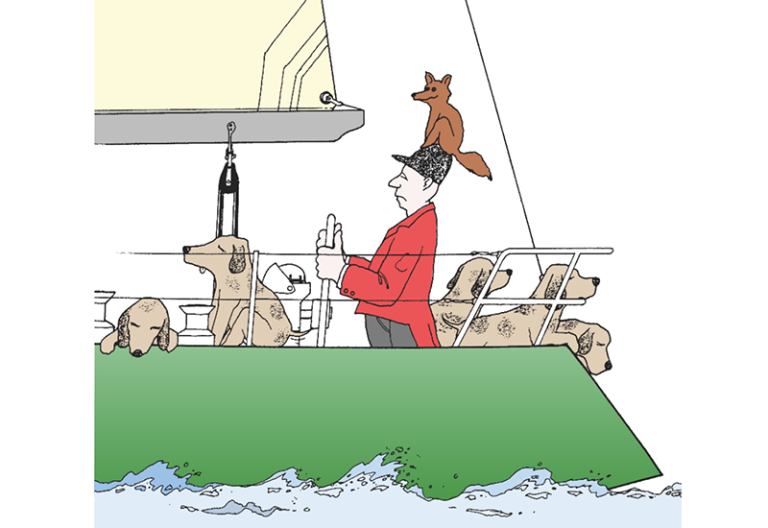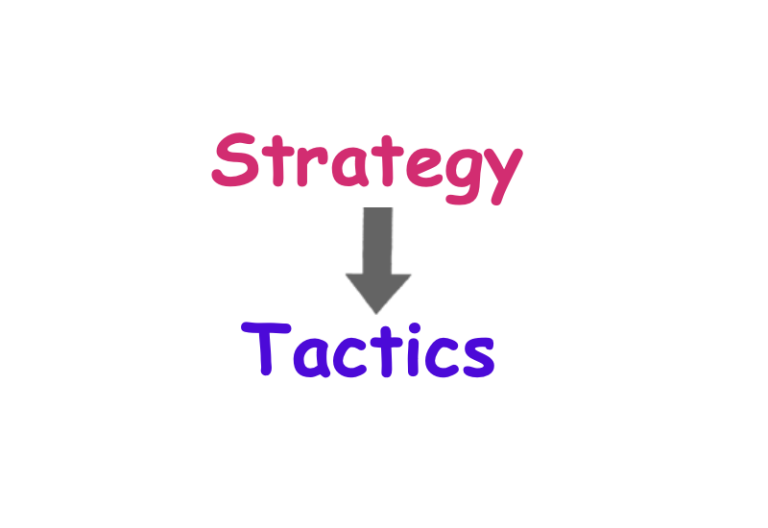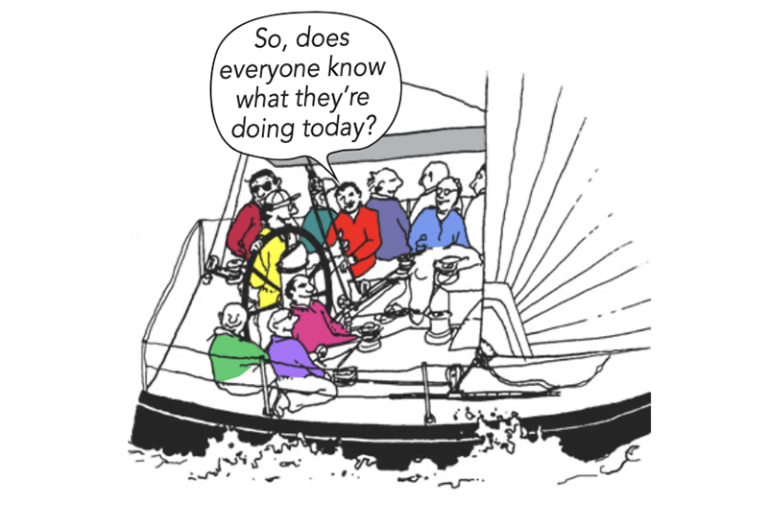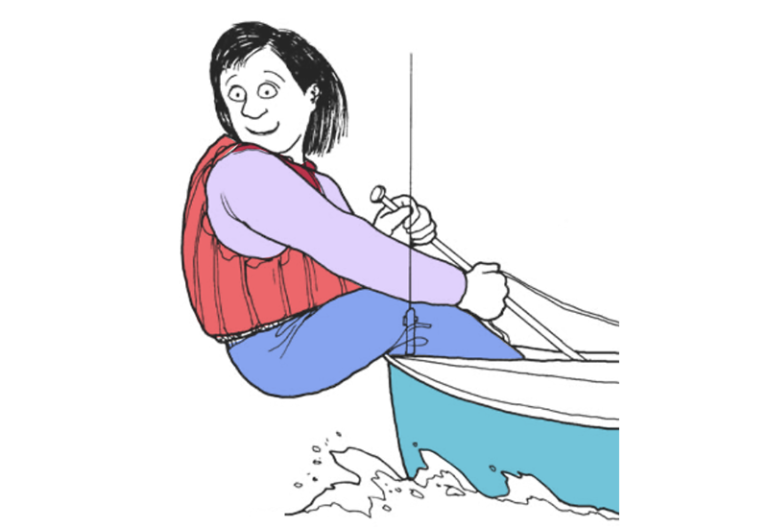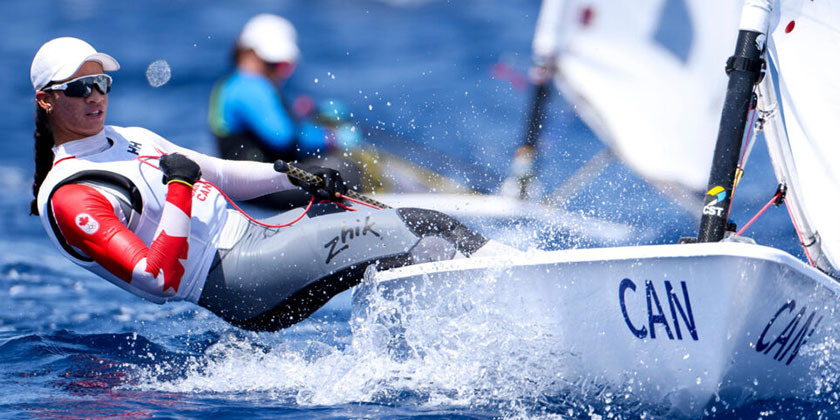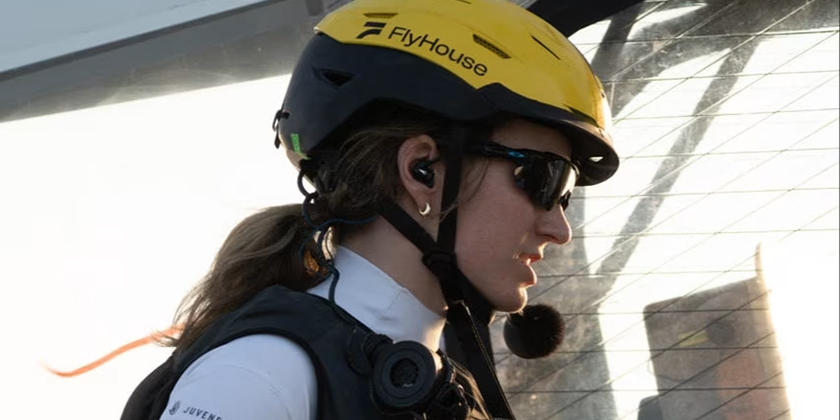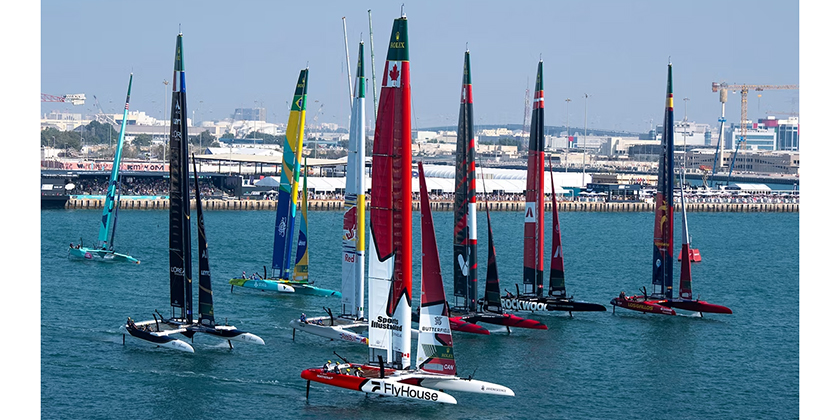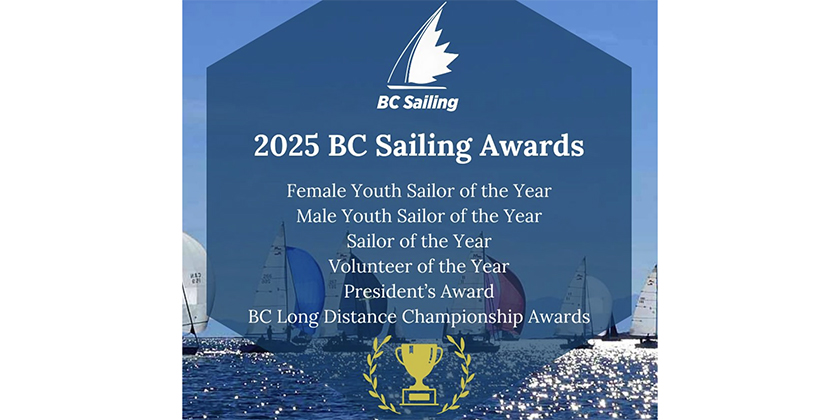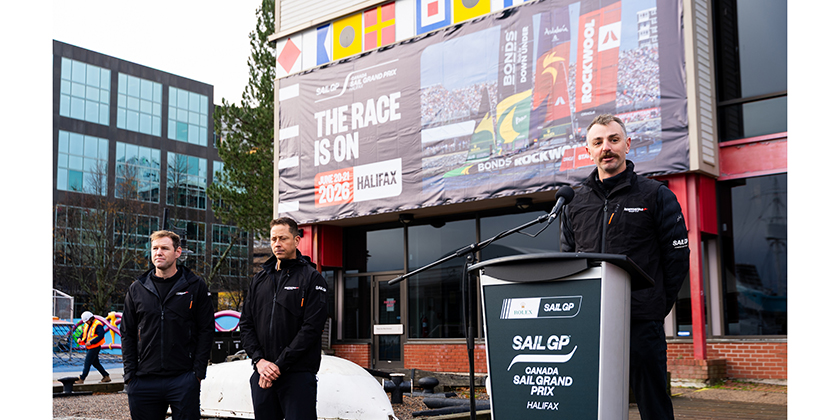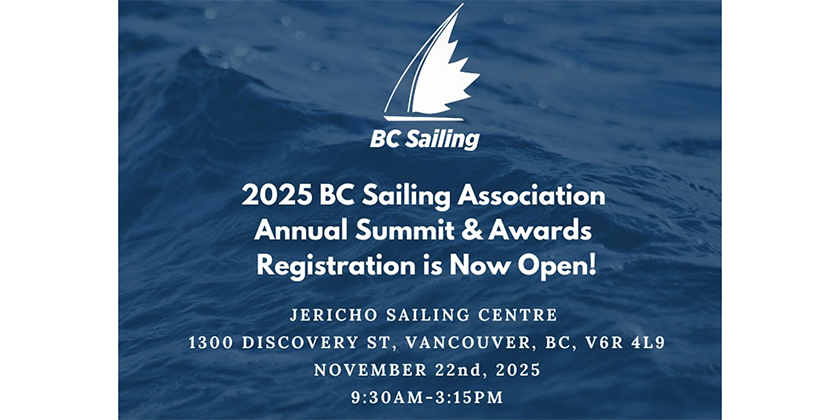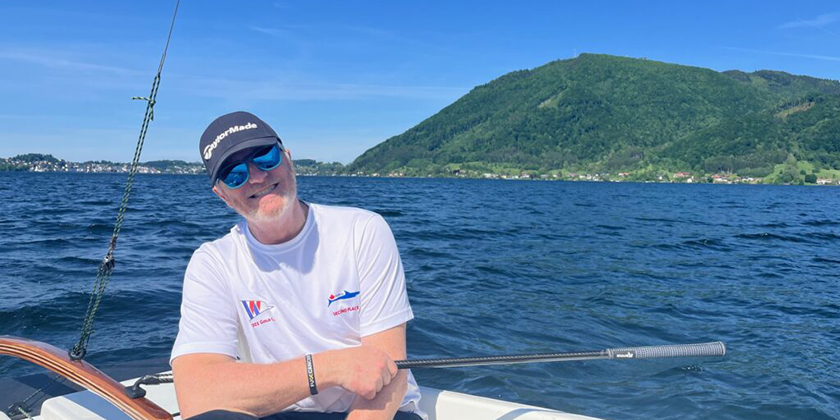Speed & Smarts: On Which Side Do You Want to Be?
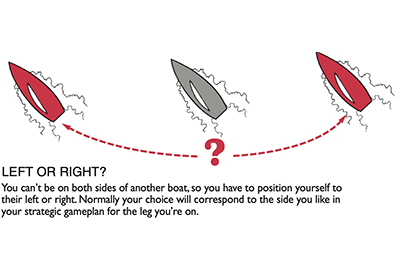
May 18, 2022
When you are trying to beat a boat that’s just ahead or behind, you have to consider strategy, not just tactics. In the same way that you want to be on the ‘favored’ side of the fleet, you should put yourself on the ‘favored’ side of any boat that you are trying to pass.
You can often take control of a nearby boat by making just a small gain relative to them. It may be possible to do this with good tactics, speed or boathandling, but you are much more likely to make this kind of gain by playing the wind.
Therefore, when you are dueling with one other boat in a fleet race, there is one strategic question that you should continually ask yourself: Do you want to be on the right side of that boat, or on the left side of that boat?
You can’t be in the middle of the other boat, so you have to choose. Generally, if you like the right side of the course, you want to be on the right side of the other boat. If you like the left, you should probably be on the other boat’s left side.
Here is a review of some basic strategic factors with comments on how they affect the tactics of one-versus-one situations:
Wind direction – Wind shifts can have a huge impact on your situation with one nearby boat. Try to predict where the next shift will come from, and be on that side of the other boat. If the wind is oscillating, play the shifts. When you’re confident about being ‘in phase,’ forget the other boat.
Wind pressure – Look for pressure on the course and try to beat the other boat to it. Sometimes there is a very gradual increase (or decrease) in pressure from one side of the course to the other – in that case, you will gain just by being on the favored side of the other boat (even if you aren’t too far away).
Current – It is very seldom that two dueling boats get far enough apart to be in different current. As long as the boat you are trying to beat is in the same water, you can forget about current (until you get close to a mark).
Course geometry – Where are you on the course relative to the windward (or leeward) mark? Is one tack a lot longer than the other? If so, this may be a key factor for beating the boats around you.
When you’re fighting with one other boat, you should stay on the side of that boat that is closer to the middle. For example, if you have to sail ten lengths on port tack and 20 lengths on starboard tack to reach the windward mark, stay on the left side of the other boat. This puts you between them and the middle of the course, with your bow ahead on the longer tack to the mark.
If you’re just ahead of the other boat, this position allows you to push them farther to the side of the course. Once they reach a layline, it’s easy to keep them behind you. If you are behind them, staying on the side that’s closer to the middle of the course will keep you from getting cornered at the layline.
Key Tip
Think ahead so you know which side of the other boat you want before you converge with them. While you are sailing around the race track, continually ask yourself (and your team), “Left or right?” This way you will always be prepared to put yourself in the best position relative to nearby boats. Avoid making rushed, knee-jerk decisions at the last second.
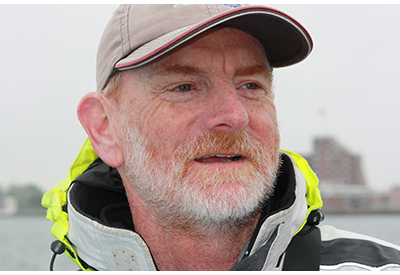 Dave Dellenbaugh is the publisher, editor and author of Speed & Smarts, the racing newsletter. He was the tactician and starting helmsman on America3 during her successful defense of the America’s Cup in 1992 and sailed in three other America’s Cup campaigns from 1986 to 2007. David is also two-time winner of the Canada’s Cup, a Lightning world champion, two-time Congressional Cup winner, seven-time Thistle national champion, three-time Prince of Wales U.S. match racing champion and past winner of the U.S. Team Racing Championship for the Hinman Trophy. He is currently a member of the US Sailing Racing Rules Committee (and was its chairman from 2005-2008).
Dave Dellenbaugh is the publisher, editor and author of Speed & Smarts, the racing newsletter. He was the tactician and starting helmsman on America3 during her successful defense of the America’s Cup in 1992 and sailed in three other America’s Cup campaigns from 1986 to 2007. David is also two-time winner of the Canada’s Cup, a Lightning world champion, two-time Congressional Cup winner, seven-time Thistle national champion, three-time Prince of Wales U.S. match racing champion and past winner of the U.S. Team Racing Championship for the Hinman Trophy. He is currently a member of the US Sailing Racing Rules Committee (and was its chairman from 2005-2008).
You can subscribe to the Speed & Smarts newsletter HERE.

